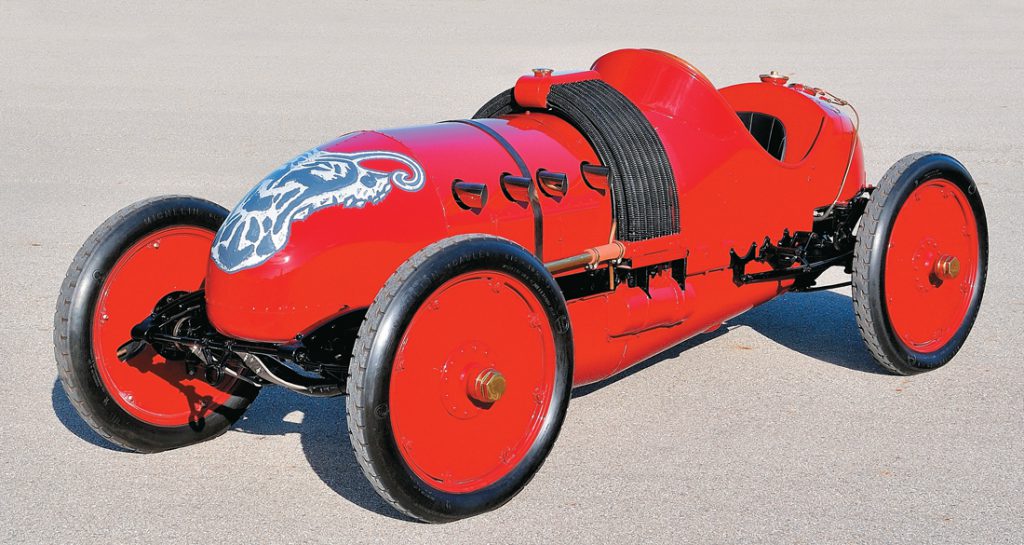
by Jack Stewart
Note: The following story was excerpted from the February 2016 issue of Collectible Automobile magazine.
Don’t cross Buick. The manufacturer was eager to win some races at the Indianapolis Motor Speedway on May 27, 1910, but its Model 30 racecars were disqualified the morning of the race. Buick management was mad and resolved to get even. In a time before “the Brickyard” had settled on a yearly 500-mile race, Buick planned to come back for the track’s next meet on July 1 with revolutionary cars to extract its revenge.
More Collectible Automobile Photo Feature fun
From the team’s start in 1907, Buick had one of the most successful racing operations in the nation. General Motors founder William Durant was quick to grasp a “win on Sunday, sell on Monday” strategy, and allocated the then-impressive sum of $100,000 to form a racing team. Its top drivers included Louis Chevrolet and “Wild” Bob Burman whose racing philosophy was “It either holds together and I win running wide open, or it breaks and I lose.” The public was well entertained either way.
For the return to Indy, two Buick 60 Specials were built in only three weeks—one for Chevrolet and the other for Burman. They each had a monstrous 622-cid four-cylinder engine with pistons as big as coffee cans. Buick touted the virtues of its valve-in-head engine, so of course overhead valves were employed. At a time when racecars usually carried a riding mechanic, the 60 Special had a narrow single-seat body. Indeed, it was unusually streamlined for its time with a nose of rounded aluminum. The normal flat radiator was replaced by tubes that wrapped around the cowl. The wood-spoke wheels were covered with aluminum discs in a further effort to reduce wind resistance.
Burman called his car the “Space Eater,” perhaps with an eye to publicity. The public dubbed the racing Buicks “Bugs” and that’s the name that stuck. A ram’s head was painted on the nose “to show ’em we were butting back into [Indy] racing,” claimed chief engineer Walter Marr.
50 Years Ago: The Lotus-Ford Shakes Up the Indianapolis 500
The radical appearance alone was enough to capture the public’s attention—especially when the exhaust ports were shooting out flames. Plus, the 60 Specials were as fast as they looked. In Indianapolis time trials, the Bugs were timed at more than 105 mph.
Unfortunately for Buick, revenge didn’t turn out to be that sweet. The Bugs were fast in a straight line, but hard to control. The cars’ narrow wheel track hurt handling. The Bugs failed to win a race at Indy, and they were seldom raced afterward.
The car seen here is believed to have been the Bug raced by Burman. Charles Howard, Buick’s West Coast distributor (and the owner of legendary racehorse Seabiscuit), found the car in a Kansas barn. Howard passed it on to Charles Chayne, Buick’s chief engineer from 1936 to 1951. As an early collector of vintage cars and a frequent judge at the Pebble Beach Concours d’Elegance, Chayne was a good custodian of the Buick Bug, and eventually donated it to its current owner, the Alfred P. Sloan Museum in Buick’s home of Flint, Michigan. Today the Bug is occasionally displayed as one of the rotating exhibits in the museum’s Buick Gallery and Research Center.